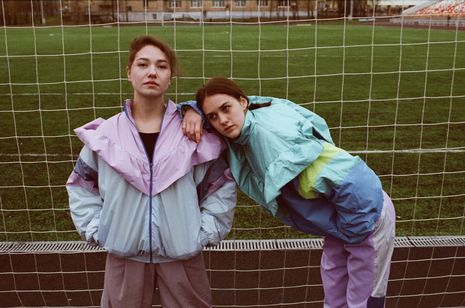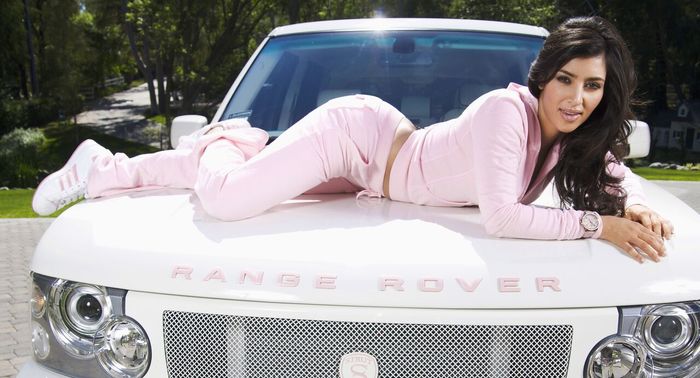Why can’t fashion forget about the 90s?
Fashion editor, Kasia Truscott, investigates why 90s nostalgia is fashion’s ever-loving muse

Ever since I first started to dabble in the world of fashion, the 90s was an era that had always, without a doubt, fascinated me. From pearled Chanel suits to silky Calvin Klein slip dresses, 90s fashion is the reference that the industry just won’t let go of. And for good reason, too. The 90s marked a turning point in fashion history as the decade that designers started to embrace a return to minimalism off the back of the eclectic styles of the 80s, all the while balancing high fashion glamour with street style grunge. Public interest in the catwalk surged as televised runway shows became accessible to more than just the fashion elite. Designers like Jean Paul Gautier, Thierry Mugler and Alexander McQueen were renowned for showing off their intricate, whimsical collections through theatrical spectacles on the runway. And, of course, what would the 90s be without the big five — Naomi Campbell, Cindy Crawford, Claudia Schiffer, Linda Evangelista and Christy Turlington — who practically invented the supermodel movement? It was, in many ways, something of a golden age for fashion.
“This was the decade that fashion became art, and art became fashion”
The thing about the 90s was that its fashion was just so cool, it didn’t care. When it came to its street style, everything hung low. The silhouettes were looser, the jeans baggier, the make-up simpler. It was the decade of making the casual cool again, ditching sharply tailored cuts for free-flowing, androgynous shapes. And let’s face it: comfort is timeless. So is it really that much of a surprise to see that we’re still talking about Gwyneth Paltrow’s 90s street style nearly thirty years later? Loose-fitting button-ups and draping maxi skirts have provided generations with all the inspiration needed for a pared-back sophistication that’s still being sought after today.
On the runway, the 90s was all about performance. This was the decade that fashion became art, and art became fashion. The early 90s saw Versace’s Spring/Summer 1992 collection open with Milla Jovovich on a swing adorned with flowers, paying poetic tribute to Jean-Hondré Fragonard’s famous 1767 oil painting, ‘The Swing’, by which the collection was inspired. Fast forward to the end of the decade, and the risks being taken were even greater.
“Its street style favoured a timeless, loose simplicity; its runway sought an endless adventure”
Alexander McQueen left spectators around the world stunned when Shalom Harlow emerged in a white strapless gown for the grand finale of McQueen’s Spring 1999 show, locked into a rotating platform as the physical centrepiece between two robotic contraptions, typically used to spray paint cars. As Harlow was slowly spun around on the platform, the robots dramatically came to life, spraying the Canadian model in a beautifully chaotic yet choreographed dance that drenched her gown with intricate patterning of black and yellow paint. It was potent, it was pioneering; it was quite literally poetry in motion.
So, maybe there’s a good reason why the legacy of the 90s runway has been so firmly imprinted into our minds. And maybe part of that reason is recognising that the 90s fundamentally had attitude. It was an attitude that was larger than life, clearly reflected in the experimental nature of its runway as much as it was by the models who walked it. Tom Ford’s Fall/Winter 1995 collection for Gucci not only crystallised his legacy as a fashion great but also welcomed a new era of slick, sexy runway show that was all about status and seduction. Following the enigmatic personalities of models like Kate Moss and Amber Valletta down a single spot-lit runway, audience attention was lured into the sensuality of Ford’s jewel-toned satin shirts and covetous velvet hipsters. Its charismatic glamour has enshrined Ford’s collection as one of the most iconic catwalks of the 90s.
Lest we forget that the 90s was also the decade that birthed grunge. The theatrics of designers like Thierry Mugler embraced the grunge movement with flamboyantly open arms, fusing it with futuristic glamour and his quintessentially outrageous sensuality. Mugler’s first couture collection arrived in the early 90s for Fall/Winter 1992, which saw a series of unique pieces centred around the structure of the corset. The result? A collection of ultra-feminine silhouettes, mysteriously dark tones and dazzling embellishments of textured details and sheer fabrics. Mugler’s creativity was exalted by the fierceness of models like Tyra Banks, whose dynamic walks breathed life into his designs, flaunting its grunge-turned-glamourous attitude. Now considered something of a cult collection, Mugler’s couture debut exhibited a remarkable level of artistic precision, ironically changing the course of couture forever.
Fashion has always loved a bit of drama, and the 90s served exactly that. Where its street style favoured a timeless, loose simplicity, its runway sought an endless adventure through all the creative avenues that high fashion has to offer. The 90s is nostalgia on a pedestal, but idolising it doesn’t have to be a bad thing. It’s hard to live up to a legacy of motorcycle corsets, metallic catsuits and personalities as big as Naomi Campbell and Tyra Banks on today’s runway. Maybe we are yet to experience the next era of enlightenment in fashion. Until then, maybe we’re right to look back on the 90s with a fond, nostalgic eye.
 News / Cambridge academics stand out in King’s 2026 Honours List2 January 2026
News / Cambridge academics stand out in King’s 2026 Honours List2 January 2026 Interviews / You don’t need to peak at Cambridge, says Robin Harding31 December 2025
Interviews / You don’t need to peak at Cambridge, says Robin Harding31 December 2025 Comment / What happened to men at Cambridge?31 December 2025
Comment / What happened to men at Cambridge?31 December 2025 Features / “It’s a momentary expression of rage”: reforming democracy from Cambridge4 January 2026
Features / “It’s a momentary expression of rage”: reforming democracy from Cambridge4 January 2026 News / Varsity’s biggest stories of 202531 December 2025
News / Varsity’s biggest stories of 202531 December 2025










